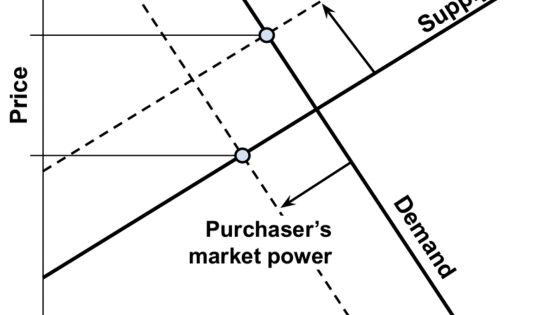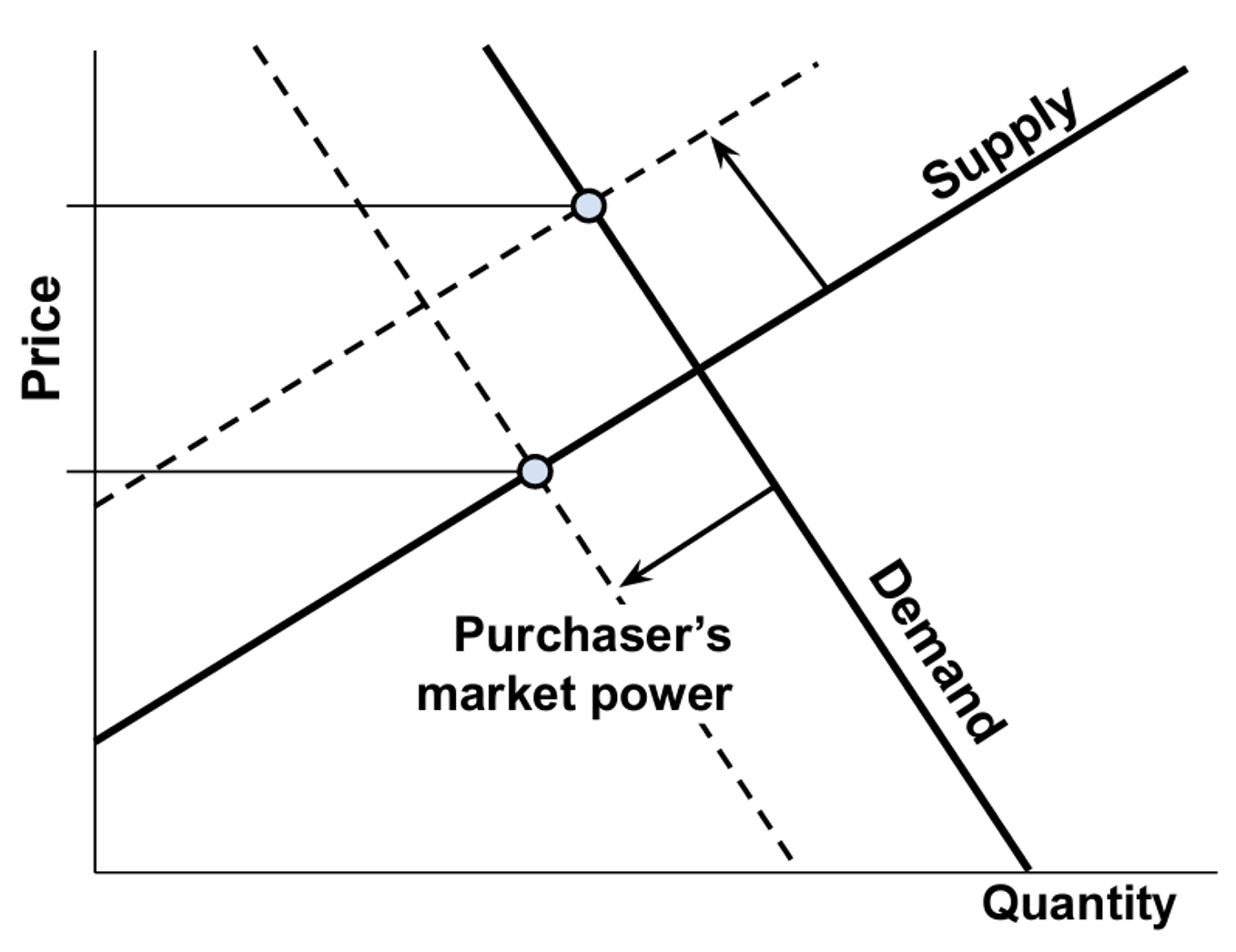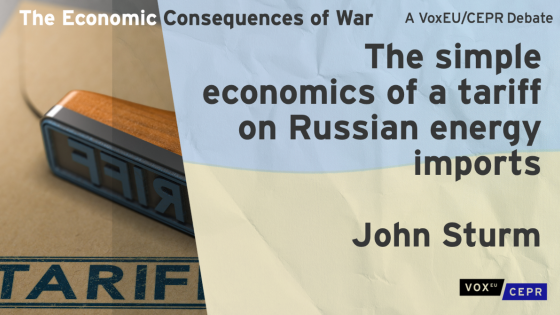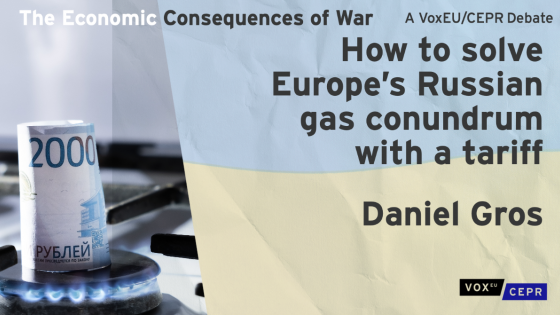"It's clear that we cannot give in to Russia's blackmail," said EU Vice President Dombrovskis, in response to Russia’s cutting off gas supplies to Poland and Bulgaria. “We have to be ready for it [blackmail]” Chancellor Scholz told reporters in Tokyo.1
As has been clear since 24 February, responsible governance requires that the EU prepare for the possibility of a complete EU gas cut-off by Putin. Although significant steps are being taken, the Commission’s proposed roadmap (European Commission 2022) only envisions voluntarily cutting Russian gas imports from 155 billion cubic metres (bcm) to 55 bcm by the end of 2022,2 while Putin might well enforce a cut to 0 bcm at any time – a rate of gas reduction perhaps ten times greater than the Commission is considering. Frans Timmermans (2022), the vice-president in charge of the EU Green Deal, has said this two-thirds reduction in eight months will “give us much-needed room to manoeuvre". This evaluation may prove less than visionary.
While a tariff on Russian gas3 is justified and can avoid the severe consequences of an outright ban, it would be best implemented as part of a gas-purchasing cartel that could also organise a quick and vigorous response in the form of a price ultimatum. As McVicar (2022) notes, half of Putin’s revenues come from oil and gas exports. However, the European Commission has, so far, been unable to provide concrete guidance. And Hernandez (2022) has catalogued difficulties raised by various perceptive observers. Our view is that success requires designing a framework of fair and economically sound principles that essentially solve the catalogued difficulties, while leaving room for practical considerations. Second, such a framework must be adopted, before final negotiations.
Although only one piece of a responsible plan, a gas-purchasing cartel could play an essential role in protecting EU economies from Russian blackmail and also in helping to keep the EU unified as Putin tries to fracture it, as he is attempting to do (WSJ Editors 2022). Its twin goals would be reducing the EU’s financial support for Russia’s Ukraine invasion and reducing Putin’s ability to hold EU economies hostage to Russian gas supplies. It could do this in two steps.
1. A quick-start Russian price ultimatum with some part (up to 100%) of the price reduction placed in an escrow account.
2. Collective purchasing of additional gas from all sources but with targeted tariffs (leaving non-Russian long-term contracts undisturbed).
Behind the cost-benefit justification for an EU cartel lies a strategic vision recognising the benefits of credible, step-by-step reductions in Russia’s energy revenues until the conflict is resolved (Eichstädt 2022). This is only possible with the coordination that comes with some form of buyer’s cartel.
A Russian price ultimatum with a taxed escrow account
Russia has been profiting from war-induced high gas prices that are at least eight times the price it willingly sold gas for in 2020 (Ockenfels and Zachmann 2022). Given this and the time required to start a cartel and adjust a tariff, a Russian price ultimatum should begin immediately and last until the cartel proves to be a better alternative for Russian gas purchases. The ultimatum would simply name the price that all EU purchasers would pay Russia for gas delivered during the next month (or a similar contract-convenient period.) This price could change monthly.
To lessen the aggressiveness of this tactic, some fraction (up to 100%) of the payment reductions could be put into an escrow account with a stipulation that the funds would be turned over when some war-related condition (such as cessation of hostilities) is met. Second, to increase the incentive to end the war, the funds in escrow would be taxed at some rate (such as 5% per week) and revenues allocated to Ukraine (Chaney 2022).
Stopping or delaying the partial availability of payments is obviously far quicker than reducing EU gas demand, but it is also more dangerous. Putin might retaliate by cutting exports faster or he might retaliate militarily. Both possibilities are beyond economic calculus, hence the cartel should only have the power to recommend specifics to the EU Commission, arrange for an escrow account, and monitor compliance.
A framework for facilitating agreement
The greatest risk to implementing a successful cartel is not poor design but rather no design at all due to lack of cooperation.4 Agreement, we believe, is best facilitated by a simple framework which could be adopted as a starting point and which embodies sound and impartial economic principles.
For clarity, the suggested framework will sometimes specify a possible approach to implementation as an example. The example would not be written into the framework, because, in most cases, adjustments will be needed and those are best left to the final design.
Although we realise the final design will include a multitude of such adjustments, our experience in market design warns us that complexity, especially when the design time is too short for even rudimentary testing, endangers the integrity of the economic design. This is because of non-obvious interactions between design components and the difficulty of intuitively analysing any system with multiple linkages. Hence, we recommend placing a high value on simplicity as negotiations proceed.
Reasons for collective purchasing
Cartels exercise market power in order to change the market price. A supply (sellers’) cartel such as OPEC will shift the supply curve left (reduce quantity) in order to raise the price, while a demand (buyers’) cartel will shift the demand curve left to reduce the price.
Figure 1
The key source of power for either is control over as much supply or demand as possible. If one buyer decides to buy less in order to reduce price, it can only reduce demand and price a little. So, its price saving is small. But if two buyers team up and each make the same quantity reduction, their price reductions will add together and each will get double the benefit of acting alone. The more purchasing power that joins the cartel, the greater the total benefit.
Note that buyer cartels work better for steeper supply curves. Generally, supply curves only get steep when the supply starts to run out or supply is dominated by a very large supplier or a cartel. However, it should also be noted that when both buyers and sellers are exercising market power, either with a cartel or by virtue of their size, the economic analysis becomes murky as the market degenerates into a bargaining game. In spite of this, there are good reasons to believe that buyers will be better off with additional market power (a cartel) when facing a highly anti-competitive group of suppliers.
A framework for collective purchasing
We now turn to the proposed framework for purchasing:
1. As prescribed by the European Council (25 March 2022), the cartel is voluntary.5
2. The cartel will purchase on behalf of clients (public and private companies) that submit demand-quantity bids for delivery during specified time intervals. No prices are specified.
3. Periodically (e.g. monthly), the cartel will call for offers from suppliers by a certain date.
4. Each supplier can submit a set price-quantity pairs (perhaps limited to six pairs).
5. Cartel gas-purchase auction: After converting offer prices to ‘evaluation prices’ by adding a tariff to disfavoured (e.g. Russian) parties, the cartel will select the least-cost set of offers that meet two cartel demand limits.6
a. The cartel will purchase up to, but no more than, the total quantity demanded.
b. The cartel must pay no more than an average price determined by national ‘voting’ (weighted by how much each nation purchases through the cartel).
c. Suppliers will be paid their bid prices for accepted quantities.
6. Cartel gas delivery: The cartel will then set a daily ‘market’ price and will deliver gas to all its clients at that price. If this price covers the tariff, it will help reduce demand, and the surplus could be donated to Ukraine.
7. If less gas has been purchased than was requested by clients, it is rationed in proportion to assigned country-based, Russian-supply factors. Factor Ri = (Russian gas used in 2021)/(total gas used in 2021), both calculated for country i.
Countries – as opposed to EU companies – play two roles. First, they vote for the cartel price limit. Second, to prevent companies from over-bidding in order to game the rationing mechanism, countries might be assigned a limited maximum bid quantity that they can parcel out to companies who are supplying them. That limit could be related to Russian imports in 2021 and to reductions in long-term contract volumes. The goal is to purchase as much as possible through the cartel, but prevent gaming.
The first step towards a cartel should be to adopt a simple framework (like the one above) that does not attempt to specify all details, such as exact voting rules or supplier-offer rules. Think of this as similar to adopting a constitution before passing the laws. It is far easier to agree on fair principles before specifying details that can focus attention on national self-interests. And simply adopting the framework will increase EU credibility and, as Eichstädt says (2022), “increase the time pressure on Russia to come to a negotiated agreement”.
Authors’ note: Cramton and Ockenfels acknowledge funding through the research grant EXC 2126/1– 390838866 awarded by the German Research Foundation (DFG) under Germany's Excellence Strategy. Ockenfels gratefully acknowledges support by the European Research Council (ERC) under the European Union’s Horizon 2020 research and innovation programme (grant agreement No 741409); the results reflect the authors’ view; the ERC is not responsible for any use that may be made of the information it contains.
References
Chaney, E, C Gollier, T Philippon and R Portes (2022), “Economics and politics of measures to stop financing Russian aggression against Ukraine” VoxEU.org, 22 March.
Cramton, P, D J MacKay, A Ockenfels and S Stoft (2017), Global carbon pricing: the path to climate cooperation, MIT Press.
Eddy, M (2022), “Germany is preparing to forgo Russian gas,” New York Times, 28 April.
Eichstädt, T (2022), “The best option for Germany and Europe to step up on conflict resolution in the Ukraine war,” VoxEU.org, 26 April.
European Commission (2022), “REPowerEU: Joint European Action for more affordable, secure and sustainable energy,” EUR-Lex.europa.eu, 8 March.
Gros, D (2022), “How to solve Europe’s Russian gas conundrum with a tariff,” VoxEU.org, 30 March.
Hausmann, R, A Łoskot-Strachota, A Ockenfels, U Schetter, S Tagliapietra, G B Wolff, G Zachmann (2022), “Cutting Putin’s energy rent: ‘smart sanctioning’ Russian oil and gas,” Bruegel, 28 April.
Hernandez, A (2022), “The EU’s gas-buying cartel: 5 reasons why it’s going to be messy,” Politico.eu, 31 March.
McVicar, S (2022), “Opinion: An effective Russian sanctions regime,” Global Risk Insights, 13 March.
Murray, S and J Liboreiro (2022), “EU countries paying for Russian gas in roubles may face legal action, warns Dombrovskis,” Euronews.com, 28 April.
Ockenfels, A and G Zachmann (2022), “A gas embargo is the wrong approach,” Zeit Online, 18 May.
Sturm, J (2022), “The simple economics of a tariff on Russian energy imports,” VoxEU.org, 13 April.
Taylor, K. (2022), “EU rolls out plan to slash Russian gas imports by two thirds before year end,” EURACTIV.com, 8 March.
Timmermans, F (2022), “Now, we take it to the next level,” Twitter, 8 Mar.
WSJ Editors (2022), “Russia’s Energy Extortion of Poland and Bulgaria,” Wall Street Journal, 27 April.
Endnotes
1 For the Dombrovskis quote, see Murray and Liboreiro (2022); for the Sholz quote, see Eddy (2022).
2 For an overview of the Commission’s plan, see Talyor (2022).
3 For tariff efficiency and flexibility, see Hausmann et al. (202). For a simple model of tariff design, see Sturm (2022). For the optimal tariffs and tariffs for sanctions, see Gros (2022).
4 In the context of climate agreements, Cramton et al. (2017), review how the design of the game (the cartel, in this case) can lead to cooperation by altering the self-interest of the participants. PDF available at price-carbon.com.
5 Although ‘voluntary’ is not ideal, it is necessary for agreement, and it should be remembered that essentially all cartels are voluntary, including OPEC.
6 The cartel auction: Cartel client companies bid for quantities (Qbid). Nations ‘vote’ for a maximum average price that the cartel will pay (Pmax). Auction purchases are limited to a total of Qtot < ∑{Qbid}, and a total Cost(Qtot) < Pmax × Qtot. Cost calculations include the tariffs, so Russian gas is counted as more expensive than its offer price.
Pmax might be determined as the median of national ‘votes’ weighted by Qbid volumes attributed to each nation. In this way the cartel cannot be blamed for choosing the wrong price to pay and can avoid problematic internal decisions. Votes and Pmax should be kept secret until after the auction clears.
Pay-as-bid is recommended because of its simplicity, which facilitates agreement on the design. Clients receiving less than requested will be free to purchase gas outside the cartel.







